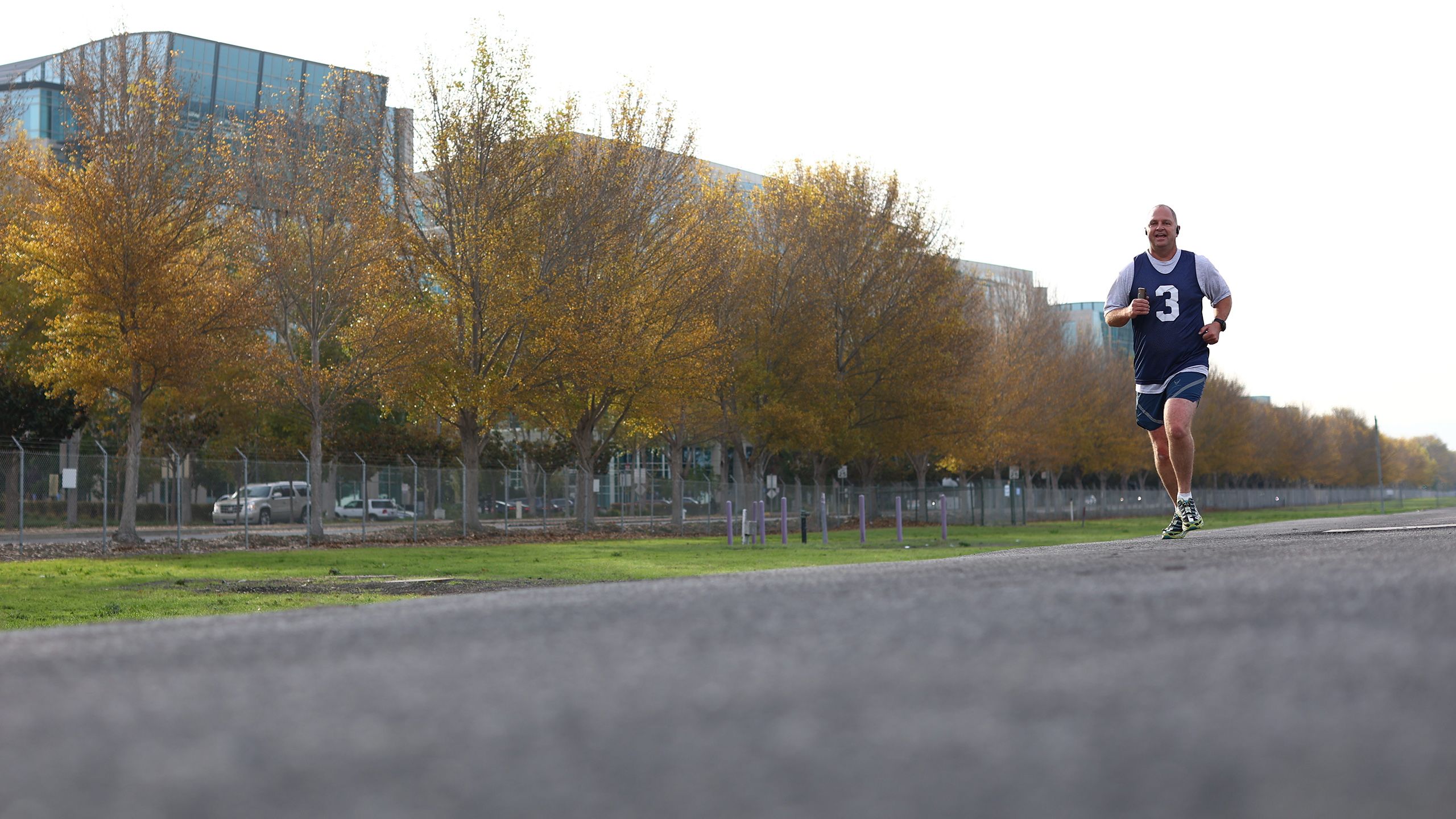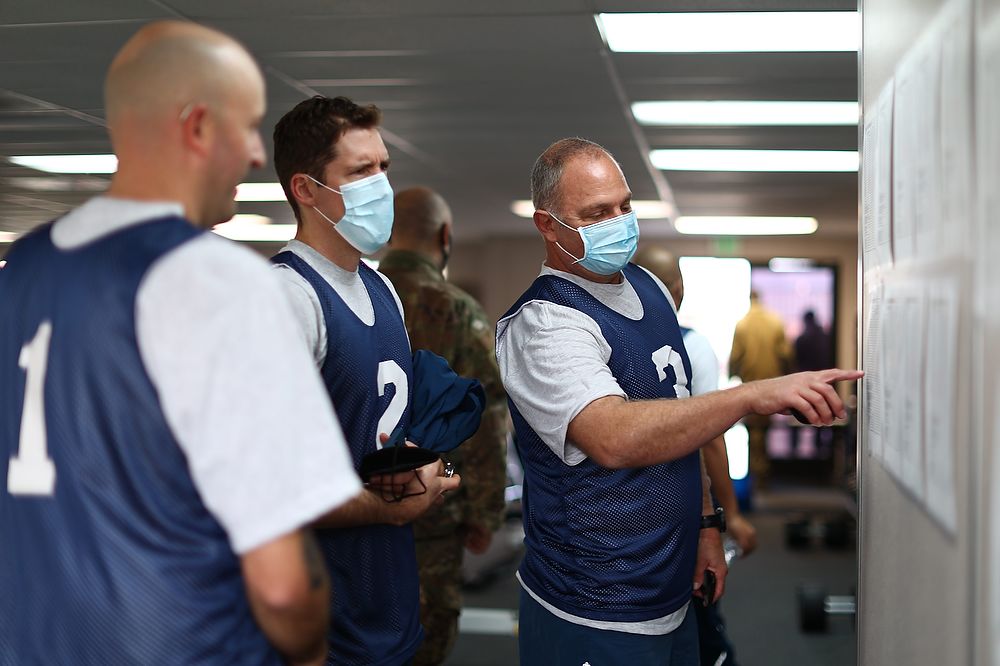Air Force announces alternative fitness components
Scoring charts released for new testing options

by Secretary of the Air Force Public Affairs
Nov. 22, 2021
WASHINGTON – The Air Force will officially add new alternative components to physical fitness assessments beginning Jan. 1, 2022. Updated scoring charts were released earlier this month and can be found here.
After announcing the components in July, over 9,000 data points were collected to determine the point values for each component by assessing approximately 2,000 Airmen from 23 installations.
Airmen will have the choice to perform these options to meet the strength and cardiovascular requirements:
Cardio
Traditional 1.5-mile Run
High Aerobic Multi-shuttle Run (20M HAMR)
Strength
Traditional Push-ups
Hand Release Push-ups
Sit-ups
Traditional Sit-ups
Cross-Leg Reverse Crunch Plank
“While testing these components at various installations, we received a large amount of positive feedback,” said Lt. Gen. Brian Kelly, Air Force deputy chief of staff for manpower, personnel, and services. “The changes to the physical fitness assessments reflect what we learned and our desire to provide Airmen with additional flexibility in maintaining fitness standards.”
Airmen can schedule their assessment and sign up for their desired cardio option via myFitness, which will be available for scheduling starting on Dec. 10. While members can select their desired cardio option when scheduling their assessment, they will select their desired strength components at time of their assessment.
While the waist measurement is no longer a component of the fitness assessment, DoD Instruction 1308.3 still requires Airmen to be measured for and maintain a healthy body composition to ensure physical readiness. The Air Force Surgeon General, who has responsibility for overall Airmen health, has reviewed alternatives and determined waist-to-height ratio as the best available method for assessing body composition. AF/SG will be providing guidance on this program in the coming months.
In addition to the approved new options, the Air Force continues to test future alternatives. Key tenets for new options include ensuring the test is an equivalent measure of fitness, regardless of testing method, and ensuring approved alternatives can be available at every location so all Airmen have the same set of options. This currently limits options like swimming or biking where sufficient equipment is not available at all locations. Likewise, based on equipment requirements and the need for continued testing, the one-mile walk is not being incorporated as an option at this time. The two-kilometer walk will remain a fitness component for those who are not medically cleared to perform the two approved aerobic options.
The Air Force Services Center is working with installation Fitness Assessment Cells to schedule and conduct training for Unit Fitness Program Managers and Physical Training Leaders to ensure proper administration of the new components.

U.S. Air Force Senior Master Sgt. Mike Hensley, of 129th Security Forces Squadron, 129th Rescue Wing, California Air National Guard, stands in front of posted scorecards while listening to a briefing before a physical fitness test, Nov. 18, at Moffett Air National Guard Base. The Air Force recently released updated scoring charts with new events to offer Airmen additional fitness testing options in 2022. (U.S. Air National Guard photo by Staff Sgt. Crystal Housman)
U.S. Air Force Senior Master Sgt. Mike Hensley, of 129th Security Forces Squadron, 129th Rescue Wing, California Air National Guard, stands in front of posted scorecards while listening to a briefing before a physical fitness test, Nov. 18, at Moffett Air National Guard Base. The Air Force recently released updated scoring charts with new events to offer Airmen additional fitness testing options in 2022. (U.S. Air National Guard photo by Staff Sgt. Crystal Housman)

U.S. Air Force Master Sgt. Joel Mattenson, of the 129th Operations Support Squadron, 129th Rescue Wing, California Air National Guard, creates a blur while completing one minute of sit-ups as 1st Lt. Conor Sullivan, of the 130th Rescue Squadron, keeps count during a physical fitness test, Nov. 18, at Moffett Air National Guard Base. In the new year, Airmen will have the choice of performing one minute of sit-ups, two minutes of cross leg reverse crunches, or a timed forearm plank. (U.S. Air National Guard photo by Staff Sgt. Crystal Housman)
U.S. Air Force Master Sgt. Joel Mattenson, of the 129th Operations Support Squadron, 129th Rescue Wing, California Air National Guard, creates a blur while completing one minute of sit-ups as 1st Lt. Conor Sullivan, of the 130th Rescue Squadron, keeps count during a physical fitness test, Nov. 18, at Moffett Air National Guard Base. In the new year, Airmen will have the choice of performing one minute of sit-ups, two minutes of cross leg reverse crunches, or a timed forearm plank. (U.S. Air National Guard photo by Staff Sgt. Crystal Housman)

U.S. Air Force Master Sgt. Joel Mattenson, of the 129th Operations Support Squadron, 129th Rescue Wing, California Air National Guard, checks the scorecard for his age and gender during a physical fitness test, Nov. 18, at Moffett Air National Guard Base. (U.S. Air National Guard photo by Staff Sgt. Crystal Housman)
U.S. Air Force Master Sgt. Joel Mattenson, of the 129th Operations Support Squadron, 129th Rescue Wing, California Air National Guard, checks the scorecard for his age and gender during a physical fitness test, Nov. 18, at Moffett Air National Guard Base. (U.S. Air National Guard photo by Staff Sgt. Crystal Housman)
New testing options, at a glance:
Cardio
Traditional 1.5-mile Run
High Aerobic Multi-shuttle Run (20M HAMR)
Strength
Traditional Push-ups
Hand Release Push-ups
Sit-ups
Traditional Sit-ups
Cross-Leg Reverse Crunch Plank


